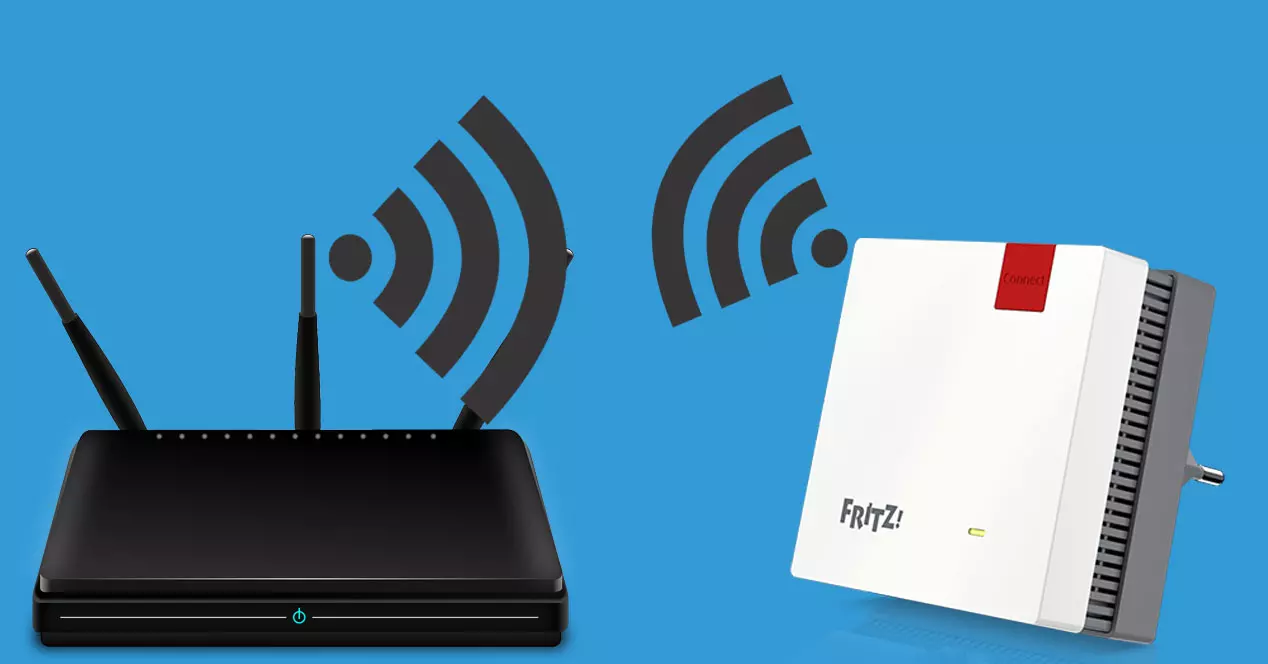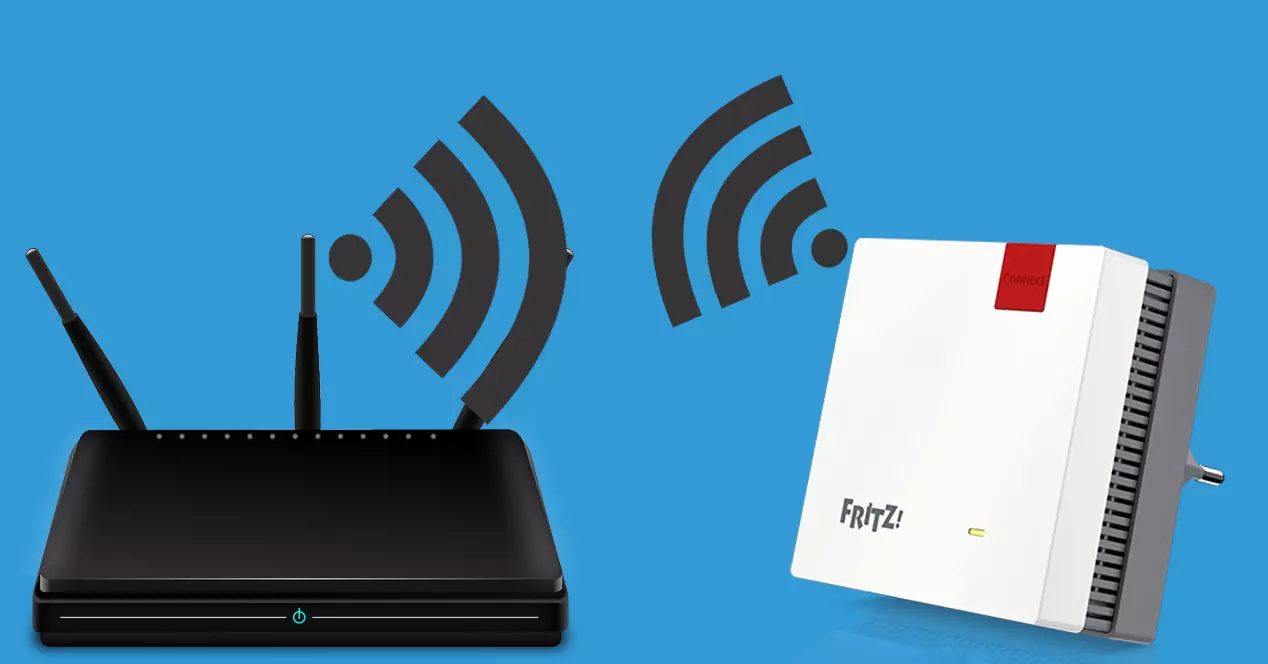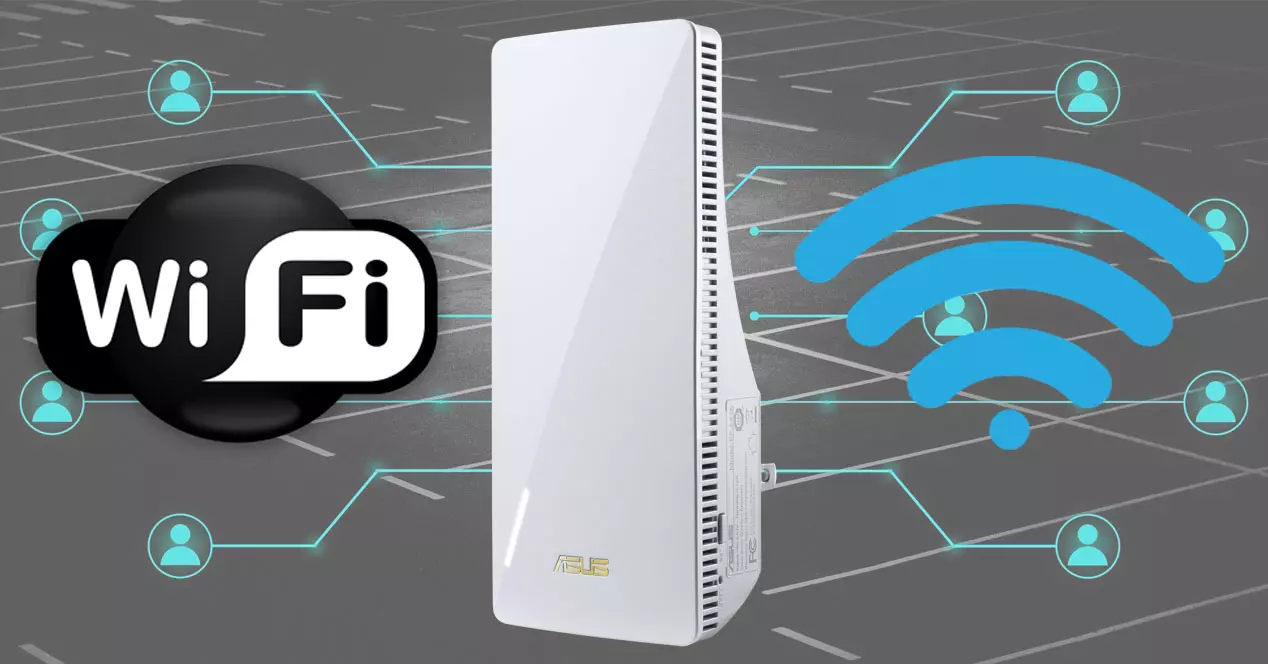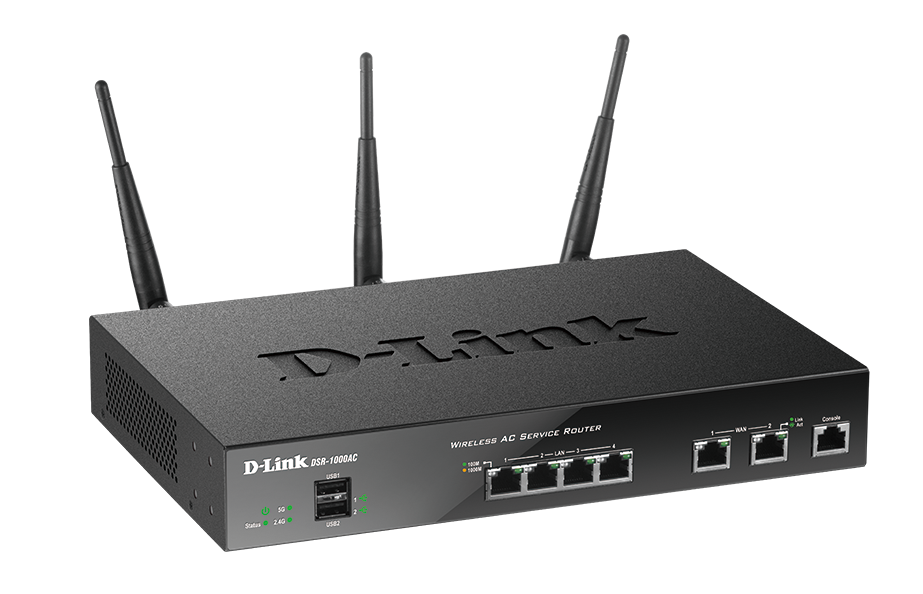
There are currently a large number of home devices that can function as access points, in fact, there are Wi-Fi Mesh systems that allow you to configure them in AP mode so as not to have router functions, they will simply provide WiFi connectivity to clients who want to connect, and all network traffic will be managed by the main router that we have installed.
An example of a home Wi-Fi access point can be the AVM FRITZ!Repeater 6000 model, a simultaneous tri-band model with the Wi-Fi 6 standard and which has several Ethernet ports. This model allows you to configure it in WiFi access point mode or as AVM calls it, the “LAN bridge mode”. If we want to use this equipment in AP mode, we will have to connect it via cable to the router or a switch, and configure it as such, in LAN bridge mode.
In the case of a professional AP, we can see the D-Link DAP-X2850, a simultaneous dual-band model with high-performance Wi-Fi 6, this model has a 2.5G Multigigabit PoE port to power the equipment, and another Gigabit port Secondary Ethernet for Link Aggregation or for management.
Both access points are aimed at a totally different public, the first of them is aimed at home environments and the second at business environments.
What is a Wi-Fi repeater or Wi-Fi amplifier?
A Wi-Fi repeater or also known as a Wi-Fi amplifier, is a hardware device that will connect wirelessly to the main Wi-Fi router or a Wi-Fi access point, and then broadcast Wi-Fi for clients to connect to it. Once the clients are connected to the repeater, they will be able to surf the Internet or exchange files through the local network.
These types of devices may not have any Ethernet ports, since they can connect via WiFi with the main WiFi router or an AP, although they normally have one or two Ethernet ports, to connect different devices via cable to them and take advantage of connectivity wired.
When a wireless client connects to the Wi-Fi repeater, the data travels from the client, through the repeater, and on to the main Wi-Fi router, but through the wireless network. While the trunk link of the APs is wired, the trunk link of the WiFi repeaters is wireless, that is, the interconnection between the repeater and the router is by WiFi and not by cable.
The vast majority of WiFi repeaters or WiFi amplifiers are aimed at a domestic environment, they allow us to expand the wireless network of our main router easily and quickly, without the need for extensive knowledge. However, there are also professional WiFi access points that act as WiFi repeaters, all of them centrally managed through a WiFi controller. Although due to issues of performance and capacity of the wireless network it is not recommended to use WiFi repeaters in business environments, on certain occasions where this function is needed, some professional APs allow the interconnection to be carried out via WiFi and not via cable as is usually normal. .
When we go to buy a WiFi repeater, we must make sure that it is simultaneous dual band to have the best possible WiFi performance, because all the interconnection traffic will work through one of these two frequency bands. A clear example of a WiFi repeater or extender is the D-Link DAP-X1860, a highly recommended model with dual band and AX1800 class Wi-Fi 6, in addition, we have a Gigabit Ethernet port and it supports Mesh WiFi.
In the case of professional APs that can function as repeaters of other APs of the wireless network, they are Aruba Instant On, this manufacturer has Smart Mesh technology, which allows us to interconnect several devices between them through WiFi, without the need of pulling network cable to all professional WiFi access points. This option is ideal for those cases where pulling network cables is complicated.
In the vast majority of cases where we talk about WiFi repeaters, we refer to domestic ones and not to professionals as Aruba and other manufacturers such as EnGenius do.
differences between both
The difference between a WiFi access point and a WiFi repeater is the way they connect to the main WiFi router, of course, the technical characteristics of the equipment in question and the actual speed that we are going to achieve via WiFi will vary from model to model. others.
The AP or WiFi hotspot connects to the local network via network cable, always, this means that the network of interconnection goes through the wired network, with the goal of providing the best possible wireless performance to WiFi clients. When wireless clients connect to an AP that is wired to the local network, they will have actual 1Gbps trunk bandwidth or 2.5Gbps in case the device has Multigigabit ports. Nowadays, most houses have Ethernet network cable in all the rooms, this allows you to connect different APs spread throughout the house in order to provide the best possible speed to your clients, without having to depend on the reception of the router. Main WiFi and other related issues.
The WiFi repeaters connect to the local network via WiFialways, this means that the interconnection is completely wireless. The repeater will connect with the router via WiFi, and later it will issue a WiFi connection so that the clients connect, in this way, all the traffic generated by the clients will also have to go to the main router through WiFi, which in the In practice it means that we will lose half of the bandwidth because we have “2 hops” between the client and the main router. It is totally normal for a WiFi repeater to provide less speed than an AP, unless we have a frequency band dedicated exclusively to the interconnection between the router and the repeater, in this case the real speed will depend on how far away the router and the repeater.
There are devices that can work in both AP mode and WiFi repeater mode, for example, all FRITZ!Repeaters from the German manufacturer AVM can work in both configuration modes. AP mode the manufacturer calls LAN bridge mode, WiFi repeater mode they call WiFi bridge.
Which one am I interested in buying?
Now that we know the difference between a WiFi access point and a WiFi repeater, which one am I interested in buying? The answer is: it depends on whether your house is wired or not.
If you have a house where all the rooms are wired, or you have the possibility of running an Ethernet network cable somewhere, then our recommendation is that you buy a device that can work in WiFi access point mode, so that the interconnection is carried out via wire. Today there are many “repeaters” that work in AP mode, like all of AVM’s that incorporate an Ethernet port, although we also have this in ASUS routers, in D-Link WiFi Mesh systems and in many more devices. the main manufacturers. The most important thing is that you make sure that it supports AP mode, so that the interconnection or backhaul works via Ethernet and achieve the best possible performance.
If you have a house where you don’t have anything wired, and you don’t have the possibility of running a network cable, then you have no choice but to buy a WiFi repeater. In these cases, our recommendation is that you buy a device that is simultaneous dual band and even simultaneous triple band, to have a frequency band dedicated to interconnection and we can achieve a little more real speed, otherwise, we will lose half of the width of real band after the «jump» as we have explained before. Today it is very important that you buy Wi-Fi 6 equipment because they will provide you with higher performance and greater efficiency at the wireless network level.






